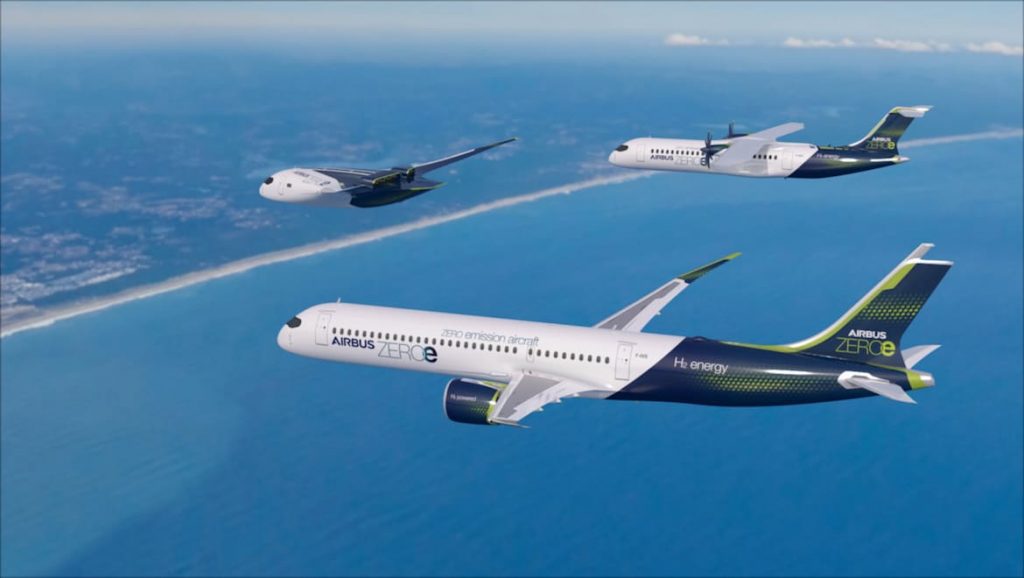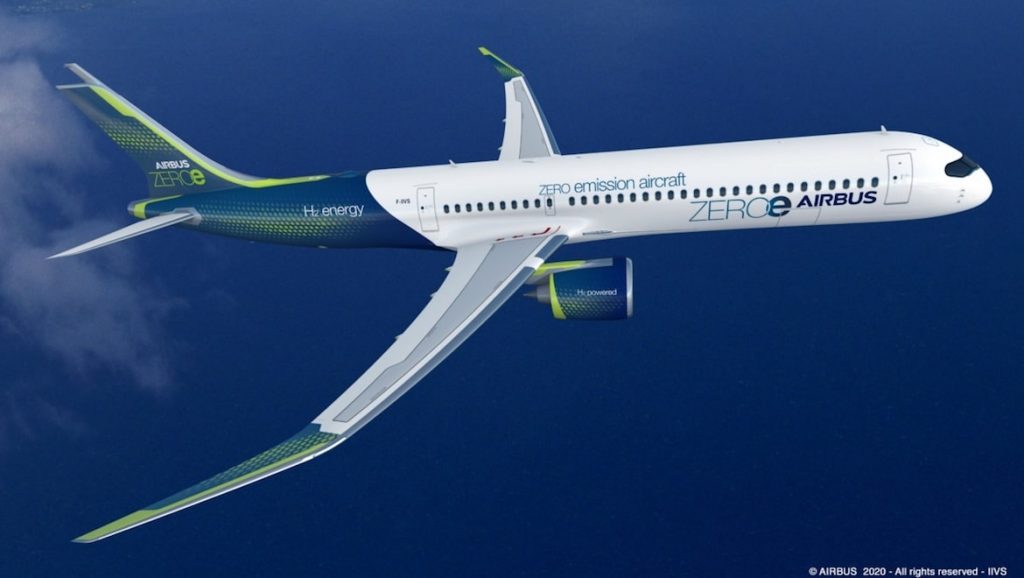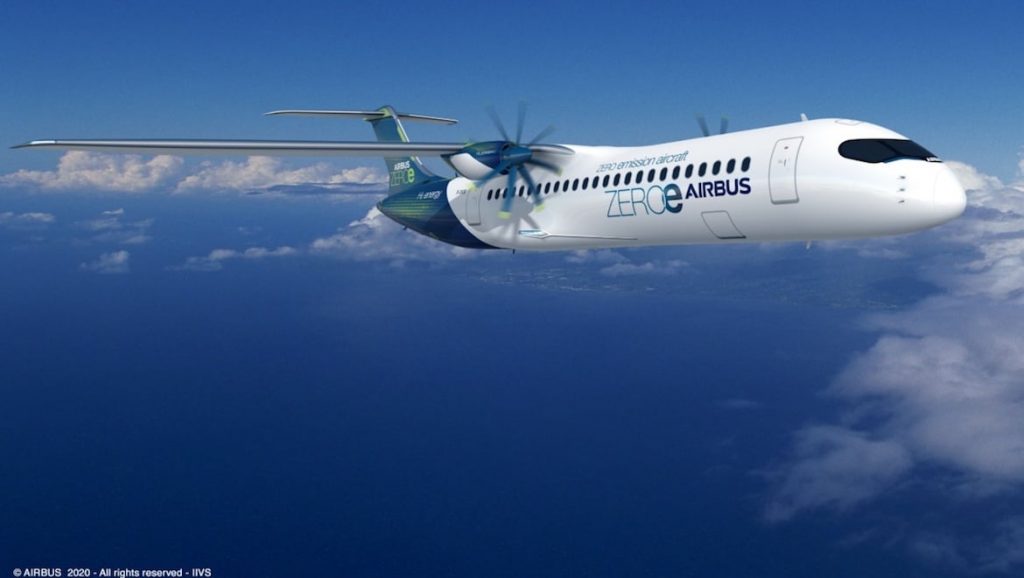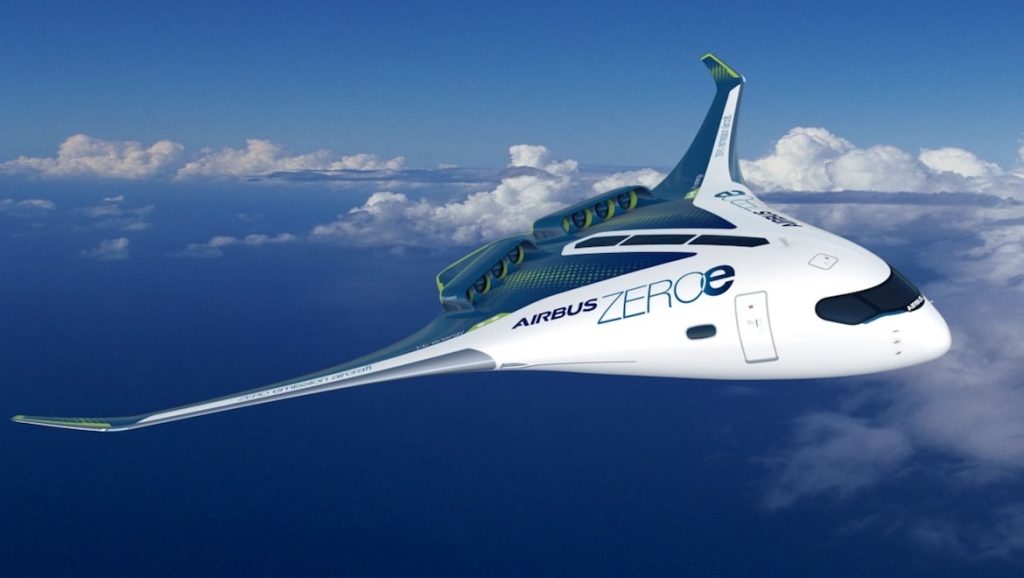
European plane manufacturer Airbus has revealed three new visual concepts for “zero emission” hydrogen-powered aircraft, in honour of Zero Emissions Day 2020.
The planemaker has now set itself a goal to design and produce the world’s first carbon-free commercial aircraft by 2035, as European governments continue to push for the use of cleaner technology.
Airbus’ ‘ZEROe’ aircraft instead utilise liquid hydrogen, which the planemaker notes as the most promising future aviation fuel source.

The first of these new aircraft concepts is a new narrow-body, which could potentially serve as a future replacement to the A320.
It’s described as a turbofan aircraft, powered by a modified gas-turbine engine and boasts a range of around 2,000 nautical miles.

The second concept, catering to the regional aviation sector, consists of a twin-engine turboprop, capable of carrying up to 100 people for a range of up to 1,000 nautical miles.
In both models, the engines are fuelled by burning liquid hydrogen, which is stored in the rear fuselage.
The third conceptual design contains a unique “blended wing body”, similar to previous designs released by Airbus in its futuristic programs.
Due to its unusual design, this aircraft could carry up to 200 passengers, and present a number of options for hydrogen storage and distribution.
The cabin design for this aircraft is likely to be unlike anything we’ve seen before.

Airbus is reportedly currently working on a demonstrator model, with initial results expected in 2021.
“The demonstrator will allow us to assess what the most promising architecture is,” Airbus chief technology officer Grazia Vittadini said.
“We see it as applicable to all Airbus products eventually.”
In order to achieve its goal of carbon-free commercial aircraft by 2035, Airbus will likely need to settle on its chosen technologies by 2025, Vittadini said, however some industry sources believe this may be too ambitious of a target.
Airbus is also likely to face a number of challenges in its journey towards hydrogen-powered flight.
Liquid hydrogen is notoriously volatile and requires extremely low temperatures. Some worry common usage onboard aircraft is not safe.
Airbus has dismissed such concerns, and instead called for massive investment in new energy infrastructure.
This is due to the fact that mist hydrogen used today is extracted from natural gas, which still creates carbon emissions.
Yet, the planemaker is adamant that any hydrogen used for aviation would instead be produced by means of renewable energy and extracted from water with electrolysis.
That process would in fact be carbon-free so long as it was powered from start to finish with renewable energy, however it is currently more expensive.
Commenting on the new concepts being unveiled, Airbus chief executive Guillaume Faury said, “This is a historic moment for the commercial aviation sector as a whole and we intend to play a leading role in the most important transition this industry has ever seen.
“The concepts we unveil today offer the world a glimpse of our ambition to drive a bold vision for the future of zero-emission flight. I strongly believe that the use of hydrogen – both in synthetic fuels and as a primary power source for commercial aircraft – has the potential to significantly reduce aviation’s climate impact.”










